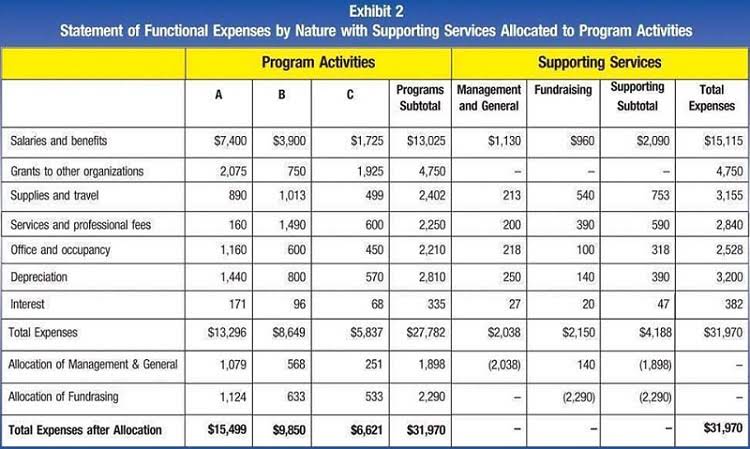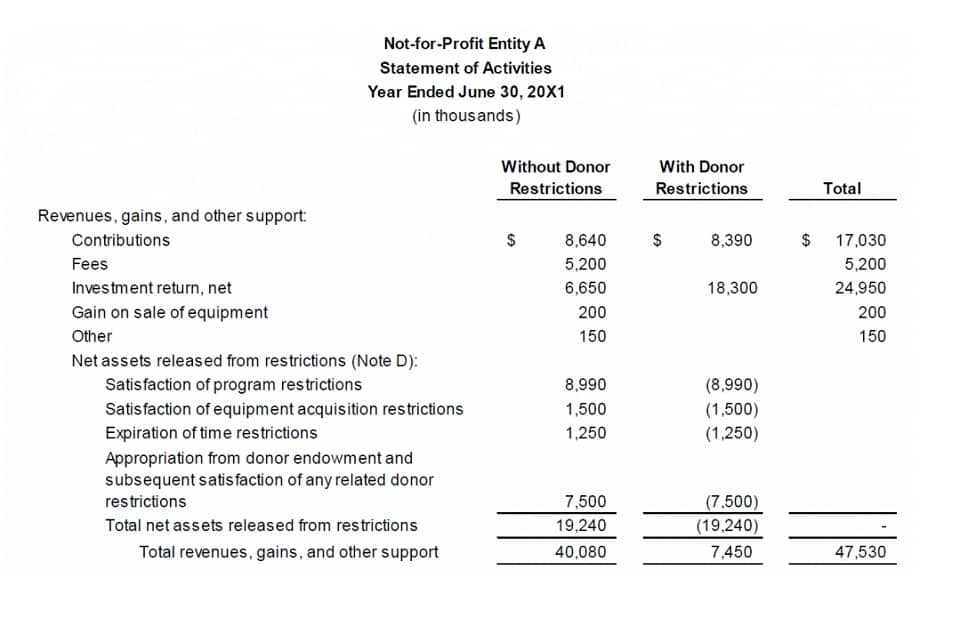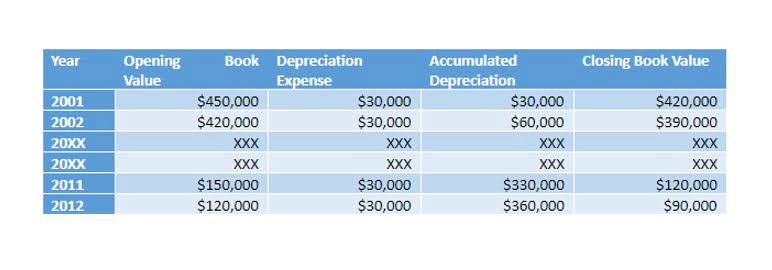To control labor costs, companies can invest in automation, workforce planning, and productivity training. Utilizing time-tracking software and optimizing shift schedules can help reduce overtime expenses while maintaining efficiency. For example, if a manufacturing company spends more on raw materials and labor, its gross profit margin shrinks, impacting overall profitability. Misclassifying your direct and indirect expenses when claiming deductions could cause you to come under IRS scrutiny. Not to mention, failing to break down your costs could cause you to miss out on a tax deduction.
Indirect Costs = Allocation
This is because the servicing and maintenance become the lessee’s liability. Company C pays rent worth $2,000 for a production unit, $5,000 as salary to the workers and employees working in the firm, and has machinery worth $1,000 to manufacture goods. In this case, the company can easily calculate the indirect cost rate using the abovementioned formula.
The indirect expenses, however, are not affected by the number of items to be manufactured or produced. This means, if the number of units to be produced in a rented premise increases, it won’t increase the rent amount to be paid. As we describe the types of indirect costs above, they are commonly general administrative expenses. Therefore, the double entries of indirect costs or indirect expenses in the income statement are the same as other expenses. It’s important to know the difference between the types of costs because it gives you a greater understanding of your product or service, thus leading to more competitive pricing. In addition, when tracking direct and indirect costs, you will have a better grasp on your accounting and be better equipped to plan for the future.
An indirect cost is any cost not directly identified with a single, final cost objective, but identified with two or more final cost objectives or an intermediate cost objective. After direct costs have been determined and charged directly to the contract or other work, indirect costs are those remaining to be allocated to the several cost objectives. In cases of government grants or other forms of external funding, identifying direct and indirect costs becomes extra important. Grant rules are often strict about what constitutes a direct or an indirect cost and may allocate a specific amount of funding to each classification. For-profit businesses also generally treat “fringe benefits,” including paid time off and the use of a company car, as indirect costs. Understanding direct costs and indirect costs is important for properly tracking your business expenses.
How to allocate indirect costs
Supplier Relationship Management (SRM) software plays a pivotal role in modern procurement strategies by providing comprehensive solutions for optimizing supplier interactions and supply chain operations. Below are some of the core features and key use cases that enable businesses to maximize the value of their supplier networks, enhance collaboration, and mitigate risks. The indirect method starts with net income and adjusts for non-cash items and working capital changes to estimate future cash positions. It’s primarily used for long-term forecasting, financial planning, and external reporting. Mixing up these two methods—or worse, relying on just one—leads to bad decisions.
Product or service pricing: indirect vs. direct costs
That’s when you realize your forecasts aren’t as reliable as you thought. To prevent supply chain disruptions, businesses should maintain safety stock levels, establish multiple supplier relationships, and optimize logistics. Implementing demand forecasting can help anticipate material shortages and prevent cost spikes. The raw materials and work-in-progress inventory are considered assets until the final product is sold.
This is what makes these common costs affect the overall business finances rather than impacting the production procedures alone. First, you need to identify all of your indirect costs, including rent, utilities, administrative salaries, and depreciation. A qualified accountant or financial advisor can help a construction company calculate an appropriate indirect cost rate for their specific situation. Generally, a reasonable indirect cost rate falls within the range of 10% to 20% of the total direct costs of a project. The indirect cost base or bases (that is, the denominator(s) of the fraction producing a rate) should be selected so as to permit an equitable distribution of indirect costs to the benefiting cost objectives.
A cost or expense that is not directly traceable to a department, product, activity, customer, etc. As a result indirect costs and expenses are often allocated to the department, product, etc. For example, a manufacturing department that molds plastic has some costs that are directly traceable to it, such as the wages and fringe benefits of the direct labor working exclusively in that department. However, the heat for the entire building appears only on one utility bill.
Enhances Profitability Analysis
These expenses are shared across multiple projects or activities and are not directly traceable to a specific cost object or activity. For example, a project that involves significant safety or environmental concerns may require a higher level of indirect costs to ensure compliance with regulations. Usually, management has very little control over indirect costs as compared to direct costs which can be minimized by efficient management. Most cost estimates are broken down into direct costs and indirect costs.
Make it a habit to regularly assess whether the direct costs of a product or service align with its pricing and profitability. You might consider discontinuing low-margin offerings or look for ways to increase pricing whilst maintaining competitiveness, such as adjusting marketing messaging. Managing what is an indirect cost definition direct costs effectively includes strategies like real-time tracking, negotiating with suppliers, and optimizing workforce efficiency.
Certain government agencies might allow you to explain why indirect costs should be funded, too, but the decision to grant funding is at their discretion. Indirect costs incurred in manufacturing operations are known as manufacturing overhead, while indirect costs incurred in the general and administrative area are known as administrative overhead. Any finished goods that remain unsold are kept on a balance sheet as an asset. For that reason, a company may decide to classify certain costs as operating expenses instead of COGS. For example, a business may incur some direct labor costs even if it does not sell a single product/service. As the 77 percent decrease to Harvard’s indirect cost expenses has put research in jeopardy, Harvard’s unusually high indirect cost rate raises questions about how the rate itself is calculated.
Purchase raw materials or components in bulk where possible to take advantage of volume discounts. For example, you can use scheduling and workload balancing tools to avoid employee burnout and avoid overtime costs. The wood required costs $50, and you’ll also use another $10 worth of nails and glue. You’ll also need to use a special machine for this table, which will cost you $15 to work on. The proposed 15 percent cap represents the de minimis rate, which entities use if they do not have the resources to negotiate a rate. While Bucalo noted the rate increased from 10 to 15 percent last October, he still says this is not enough.
- The most common examples of indirect costs include the following expenditures, assuming they are not specific to a cost object, such as a product, service, department or project.
- You can allocate indirect costs to determine how much you are spending on expenses compared to your sales.
- To get the right amount, companies need to analyze all their expenses and determine if they were incurred directly or indirectly in making a product or providing a service.
- It differs from its direct counterpart, which involves money concerned with production.
Many Research Institutions have separate fringe benefit rates which appear not to be covered in this NIH memorandum; however, some Research Institutions include fringe benefit cost in their IDCs. Research Institutions may what to reconsider their approach on this topic (see further discussion below). Business expenses like rent and employee wages are just some of the deductions you can claim. But to do so, you need to have accurate and detailed records to back up your claims. More detailed definitions can be found in accounting textbooks or from an accounting professional. A charitable organization may have a salaried employee who works in three areas of the organization.
- For SRM initiatives to be successful, senior leadership must show strong commitment.
- Key features of procurement management include automated requisitioning, approval workflows, and real-time tracking of purchase orders.
- The tire manufacturer can’t trace the electric bill back to a specific cost object or product because the electricity is used to make all the products produced by the manufacturer.
- Accordingly, the unit cost of production would be measured using the newest or oldest inventory items.
- Knowing your direct costs is a key part of determining your product or service pricing.
Labor Example: Is Labor Direct or Indirect Cost?
Beyond just contact management, SRM software helps organizations track detailed performance metrics and historical data, which are crucial for evaluating supplier reliability and consistency. This single source of truth streamlines communication with suppliers, enhances collaboration, and enables more informed decision-making when choosing new suppliers or negotiating better terms. One of the foundational elements of SRM software is Supplier Data Management. SRM systems centralize all supplier-related information in one easily accessible platform. This includes essential data such as contact details, company profiles, certifications, performance history, and financial records. By consolidating data from various sources, SRM software ensures that businesses have accurate, up-to-date information at their fingertips.
To find out how much it truly costs you to produce a product or perform a service, you might also consider an activity-based costing (ABC) system. To create the toys, the employee needs wood, which is considered a direct material. If you want to reduce indirect expenses like utilities, cut your bills down by conserving energy. You can power down equipment when you aren’t using it, purchase energy-conserving equipment, or switch utility providers.













